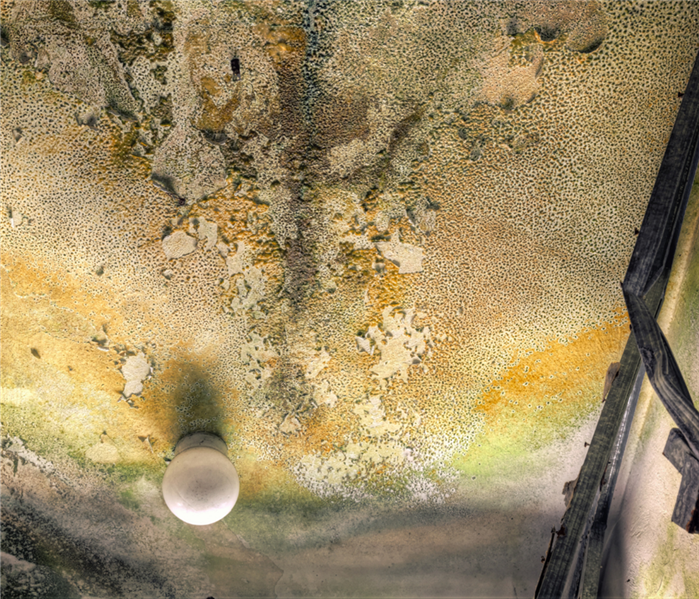“Do I have Water Damage On My Ceiling?” Steps to Take
11/5/2021 (Permalink)
After a water damage event, your ceiling might become covered in water stains and mold. Before you call up your local ceiling repair company, there are several steps you can take to assess whether or not it's time to call the experts. This guide will explain what to do when there is water damage on the ceiling so that you can save money on emergency services and speed up the cleaning process. If you need help, consider hiring professionals like SERVPRO of NW Dekalb to remove excess water and repair damaged materials. Here’s what you should do after a water damage event.
How to Tell If Your Ceiling Has Water Damage
The first step in determining what to do when there’s water damage on your ceiling is knowing whether or not you actually have water damage. In mild leaks, this can start to appear as slight discoloration on the ceiling, or peeling paint. As leaks increase in severity, they can begin to crack the ceiling or cause the drywall to sag, bow, or shift. Because different types of damage require different solutions, it’s essential to first identify yours. Some are easy to spot, while others can be difficult for an untrained eye.
What Does Ceiling Water Damage Look Like?
Ceiling water damage can be difficult to see because of its location, but it can be easier than you think when you know what you're looking for. The top layer of drywall can become brittle and crumble if exposed to too much moisture. Look out for crumbling drywall or signs of mold growth. If you spot any discoloration or spots, then there’s a strong chance there’s some hidden water damage lurking behind your ceiling. When ceiling water damage becomes severe, it can cause cracking or peeling of the ceiling. Then, if water begins to collect, the ceiling can begin to warp and bow downwards. Don’t hesitate; act now! The longer you wait, the worse things can get.
If you think there is a potential for water entry, be sure to call SERVPRO of NW Dekalb for immediate assistance.
Track Down and Repair the Source
If you can, attempt to identify and stop the source of water from creating further water damage. When significant damage is suspected, our suggestion is to immediately notify your insurance provider and take photos and video of all affected areas before attempting to stabilize the situation. Keep in mind though, that in some cases attempting to stabilize the leak yourself can damage the area further. Proceed with care.
Stabilize the Area Around the Leak
Next, it’s important to stabilize any area around a ceiling leak. This may be as simple as taping off surrounding areas with plastic and tape or moving furniture away from wet carpeting or rugs. Avoid tracking water through your home to prevent the spread of any possible bacteria or pathogens inside after inspecting your ceiling for leaks.
Clean up all standing water as soon as you can, so it doesn’t have time to cause damage. Or, if the damage allows significant water entry, then professional equipment and expertise may be needed.
Call An Expert
If you are unsure of the source of water entry or the damage becomes significant, experts like SERVPRO of NW Dekalb have the right expertise and equipment to identify, control, and restore the situation. We will rapidly and effectively make your property "Like it never even happened."
Call us today at (770) 396-3883 if you need assistance.
We are always Here to Help.





 24/7 Emergency Service
24/7 Emergency Service